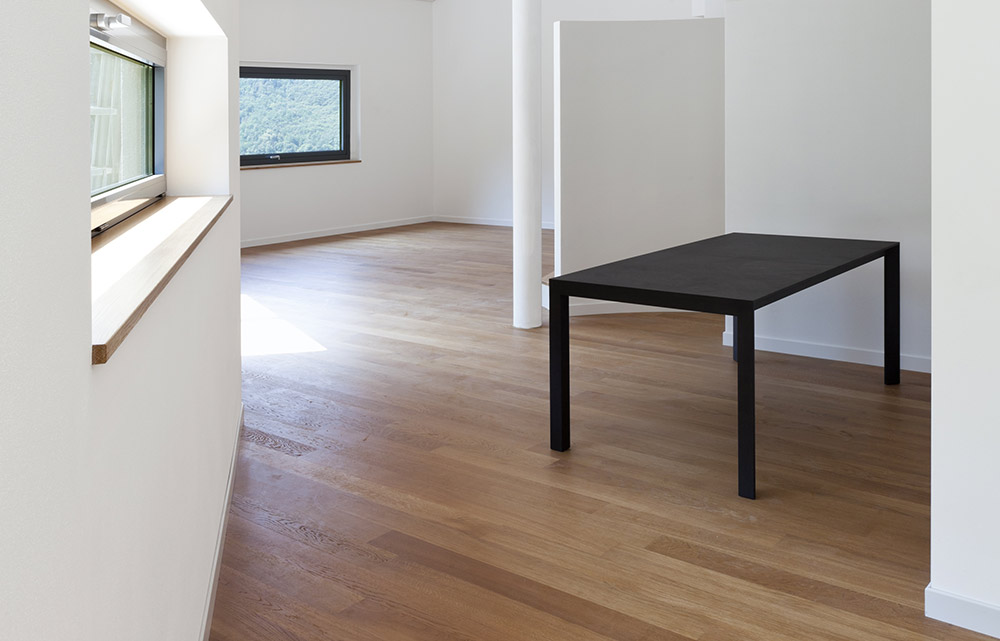
Expanding to Mississauga: Custom Home Trends Just Outside Toronto
Mississauga homeowners are raising their stakes in design creativity and construction quality, calling for builders who listen first and measure twice before any shovel hits the ground.
A custom build is never just square footage; it is the daily routine of a family, the personal priorities of its members, and the future growth each resident imagines. Choosing the right partner decides how confidently you sleep during framing season and how proudly you walk guests through the finished rooms. Finding that partner means understanding the subtle differences across neighbouring cities and the specific benefits each building market offers. Step‑by‑step budget clarity, transparent project updates, and meticulous craftsmanship top the wish list for anyone weighing a custom home in Mississauga, Hamilton, or Vaughan. While these three communities share Southern Ontario roots, each one presents its own zoning codes, soil conditions, and municipal review processes. Homeowners who recognise those nuances can push decisions forward faster and protect the integrity of their design vision. They also place themselves in the strongest position to compare builders, spot fair pricing, and lock in realistic schedules.
What Homeowners Want Most From Custom Home Builders in Mississauga
Mississauga families look for builders who combine technical rigour with clear communication from day one. They expect meeting agendas delivered in plain language, realistic schedule forecasts, and open book cost reporting that details every allowance and contingency. Site cleanliness and respectful neighbour relations also rank high, because many infill lots sit beside established residences with limited street parking. Above all, homeowners want their builder to treat the project as a partnership, not a transaction, and to explain why each decision supports long‑term durability, energy performance, and resale value.
A second priority is flexibility in design choices without sticker shock halfway through framing. Clients appreciate builders who source multiple comparable products, pass through trade discounts, and document any price shifts before materials leave the warehouse. This approach prevents budget surprises and strengthens trust as the project moves from foundation to finish. It also reduces last‑minute compromises that can dilute the original architectural intent.
Key Differences Between Custom Home Builders in Mississauga and Hamilton
The main difference between custom home builders in Mississauga and Hamilton comes down to site conditions and permitting priorities. Mississauga lots often demand creative footprint planning to meet setback rules, while many Hamilton infill parcels involve slope management and soil reinforcement. Understanding these contrasts helps you prepare accurate budgets and timelines. It also guides your choice of professionals who already speak the local building department’s language.
Lot Sizes And Setback Rules
Mississauga’s newer subdivisions feature compact lots that push builders to maximise interior space within strict side‑yard setbacks. Designers often respond with vertical expansions and multi‑purpose rooms that share structural walls to conserve square footage. Hamilton infill, in contrast, may offer wider frontages or deeper parcels, allowing sprawling ranch layouts and detached garage studios without variance applications. A reputable builder will model both footprint strategies and outline how each affects energy load, drainage, and future addition potential.
Mississauga bylaws require meticulous siting surveys and neighbour notification when setbacks are tight, which can extend pre‑construction schedules by several weeks. Hamilton approvals move quicker on lots that already meet frontage minimums, but hillside grading plans can offset that advantage. Image‑based communication tools that overlay proposed foundations on survey data help homeowners picture the finished yard and sign off faster. Up‑front clarity on these details limits costly revisions after excavation.
Heritage Considerations And Neighbourhood Character
Portions of Hamilton fall under heritage conservation district guidelines that guard façade proportions, roof profiles, and exterior cladding textures. Builders must often present material samples and historical references to city planners before permits move ahead. Mississauga’s heritage controls concentrate in select villages such as Streetsville and Port Credit, leaving large sections open to modern elevations and glass curtain walls. Choosing a builder familiar with heritage review techniques avoids re‑design fees and timeline setbacks.
Hamilton heritage districts can impose strict street‑facing window ratios, pushing designers toward side‑yard glazing to maintain light levels. Mississauga’s broader design latitude lets homeowners embrace contemporary massing with fewer municipal objections. A seasoned builder will walk you through sample precedent studies and point out which elements typically trigger revisions. This advice saves weeks of revisions and protects the project schedule.
Transit Accessibility And Parking Needs
Mississauga residents often commute through the GO network or Highway 403, so driveway access and garage storage rank high on functional checklists. Local bylaws generally mandate two off‑street parking spaces, pushing attached or tandem garage layouts. Hamilton’s revitalised downtown encourages walkability, and several infill lots qualify for parking reductions if they sit near rapid transit stops. Builders who understand these allowances can reclaim floor area for living space instead of oversized garages.
Structurally, underground parking is less common in Hamilton because of varied water tables and cost premiums. Mississauga’s stable soils near the Credit River corridor sometimes permit basement garages that preserve front‑yard landscaping. Careful geotechnical analysis identifies the most cost‑effective solution before design development locks in floor elevations. Your builder should outline long‑term maintenance requirements for any below‑grade parking to avoid future moisture issues.
Municipal Processes And Inspection Schedules
Mississauga leverages digital plan review portals that allow concurrent submissions to multiple departments, accelerating feedback loops. Hamilton relies on staged approvals where heritage, zoning, and structural reviews move in series, extending the overall timeline. Experienced builders maintain relationships with both municipalities’ reviewers and can flag upcoming blackout periods when staffing levels drop. This insight helps you pick optimal submission dates and maintain momentum.
Inspection pacing varies as well. Mississauga often bundles framing, plumbing rough‑in, and insulation checks within a two‑week window, letting trades coordinate efficiently. Hamilton inspectors may require separate visits for each layer, spreading the same milestones over a month. Your builder’s scheduling platform should account for these local rhythms to keep crews booked and materials delivered at the right times. Accurate forecasting minimises idle labour and protects budget assumptions.
Mississauga and Hamilton share Ontario building codes, yet their local processes, lot characteristics, and heritage rules set distinct expectations. Choosing a builder who masters both jurisdictions safeguards your timeline and budget. It also keeps the design intent intact under municipal scrutiny. Knowing these contrasts upfront pays dividends throughout construction.
How Custom Home Builders in Vaughan Approach Urban Design Challenges
Vaughan builders tackle density pressure and transit‑oriented zoning that shape every project near the expanding subway extension. They often negotiate angular plane setbacks that protect sunlight for neighbouring lots, leading to creative step‑back elevations and rooftop terraces. Early collaboration with city planners allows homeowners to capture skyline views without breaching height limits. Real‑time 3D massing studies help resolve shading questions before formal submissions begin.
Traffic flow along Highway 400 and Major Mackenzie Drive makes driveway placement a safety consideration rather than a design afterthought. Builders recommend wider turning radii and recessed garage doors to reduce queuing on busy streets. Sound attenuation also matters; double‑glazed windows and upgraded insulation protect interior comfort against constant traffic rumble. These technical specifications add upfront cost but safeguard day‑to‑day quality of life once the keys turn.
Vaughan’s multicultural fabric influences material palettes, with clients requesting limestone façades, copper accents, or decorative tile that reference ancestral design languages. A seasoned builder sources qualified trades who respect traditional craftsmanship standards while meeting modern code. Coordinating these finishes demands precise procurement timelines to avoid shipment delays. Clear communication keeps aesthetic aspirations aligned with structural realities at every stage.
Top Features to Prioritize When Working With Custom Home Builders in Hamilton
Hamilton’s building codes allow rich flexibility, yet certain amenities deliver oversized returns on lifestyle and resale value. Start with a clear sense of daily routines and long‑term goals, then weigh which features support both. Local energy incentives and heritage considerations influence selections, but homeowner preference leads the conversation. A collaborative builder frames those choices through the lens of cost, durability, and municipal approvals.
- Energy Recovery Ventilation Systems: These units replace stale interior air with fresh conditioned air, moderating humidity and improving indoor comfort during humid summers and icy winters. They also reduce heating loads, qualifying projects for Ontario energy rebates.
- Heated Basement Slabs: Radiant flooring keeps lower‑level living areas comfortable year‑round and eliminates the chill that deters teenagers from using rec rooms. It pairs well with polished concrete or engineered hardwood for a clean modern look.
- Integrated Solar‑Ready Conduit: Even if panels are not installed immediately, pre‑run conduit simplifies future solar adoption and boosts property value in an electrification‑focused market. The upfront cost is modest compared with post‑construction retrofit work.
- Heritage‑Friendly Fibre‑Cement Siding: This cladding meets conservation district guidelines for texture and shadow lines while offering fire resistance and low maintenance. Choosing it early avoids costly design changes if heritage planners push back on vinyl alternatives.
- Over‑Height Garage Doors: Many Hamilton neighbourhoods accommodate vans or workshop hobbies that need extra clearance. Specifying nine‑foot doors at framing avoids structural changes later and keeps exterior proportions balanced.
- Dedicated Mudrooms With Dog Wash Stations: Slushy sidewalks create daily mess in winter; a tiled dog wash keeps grime from travelling into finished areas. This small detail earns big praise from families with active pets.
Thoughtful feature selection shapes how comfortably you live in the space once move‑in day arrives. A builder who grounds every upgrade in measurable value prevents scope creep and keeps budgets aligned. These enhancements also tell a future buyer that the home was built with intention, protecting resale potential. Pairing desired amenities with the right construction methods ensures each feature performs as promised.
Budget Expectations to Set Early With Custom Home Builders in Mississauga
Clear cost boundaries keep enthusiasm from outrunning financial reality, especially when square footage goals collide with premium finishes. Begin with a complete wish list, then assign high‑level allowances to major categories such as framing, mechanical systems, and millwork. Your builder can translate those allowances into cost‑per‑square‑foot estimates that reflect current labour rates and material pricing in Mississauga. This top‑down approach helps you see which design elements stretch the budget and which ones leave room for splurges.
Contingency planning matters as much as headline numbers. Mississauga soil conditions may introduce unexpected excavation costs if buried debris or high groundwater appears once digging starts. Allocating at least ten percent of the overall contract value for unknowns protects construction momentum and decision‑making confidence. Regular budget checkpoints tied to milestones—permit approval, framing completion, and finish selections—provide frequent opportunities to adjust allowances before spending commitments lock in.
The financing strategy also shapes total outlay. Some homeowners use construction mortgages that release funds based on inspection stages, while others access personal equity to avoid lender inspections. Discussing draw schedules and lender requirements at contract signing removes surprises later. It also aligns your builder’s billing cadence with your cash flow.
Why Transparency and Collaboration Are Non-Negotiables in Any Custom Build
A transparent workflow replaces anxiety with informed decision‑making. Digital project dashboards share real‑time photographs, daily logs, and cost updates so you can track progress from any device. Weekly on‑site meetings allow you to confirm framing details, review mock‑ups, and approve material samples before installation. This visibility fosters quicker approvals and deters expensive rework.
Collaboration extends beyond homeowner and builder to include architects, interior designers, and municipal inspectors. Co‑located project documents prevent contradicting drawings from circulating among trades. When questions arise, a single source of truth eliminates finger‑pointing and keeps crews productive. As a result, warranty calls drop, and homeowners enjoy a smoother handover.
Trust thrives when builders freely share pricing breakdowns, supplier quotes, and schedule forecasts. Homeowners gain confidence to green‑light value‑added upgrades, knowing every dollar has a documented purpose. Trades also benefit from prompt information, reducing downtime. This cordial site culture ultimately shows in construction quality and respectful neighbour relations.
Questions to Ask Before Hiring Any Custom Home Builder in Mississauga
A structured interview weeds out mismatched expectations long before contracts circulate. Prepare thoughtful prompts that reveal process depth, not just portfolio highlights. Request proof of local permit success and ask for references who completed builds within the last year. Clarifying these points now saves stress once the backhoe arrives.
- How many custom homes have you completed in Mississauga within the past two years? A recent track record shows familiarity with current bylaws and inspector expectations.
- Can you describe your standard cost‑plus or fixed‑price contract structure? Clear terms reveal how transparently expenses will be tracked and approved.
- Which project management software do you use to share schedules and budget updates? A robust platform indicates organised workflows that keep clients informed.
- How do you qualify and retain your trade partners? Long‑standing relationships with licensed trades reduce rework and improve accountability.
- What is your average change‑order percentage on projects of similar size? Low percentages suggest thorough pre‑construction planning and accurate allowances.
- How do you handle municipal inspections that fail the first time? A proactive plan minimises delays and demonstrates experience.
- What warranties do you provide beyond the statutory Tarion coverage? Extended service shows confidence in workmanship and materials.
Asking targeted questions exposes any process gaps or mismatched communication styles. Answers grounded in recent examples prove a builder’s claims. They also highlight professionals who value transparency and homeowner empowerment. Selecting a builder on these merits sets the tone for a cooperative building journey.
From Design to Delivery: How Onelife Supports Your Custom Home Vision
Onelife Design & Build approaches every project as a partnership rooted in clarity, craftsmanship, and continuous support. Our team offers integrated design‑build services that unify architects, engineers, and interior designers under one accountable contract, eliminating hand‑off friction. Clients receive real‑time project dashboards with up‑to‑date schedules, cost summaries, and site photos so questions never linger. Regularly scheduled walk‑throughs translate technical decisions into plain language, empowering you to approve details with confidence. When keys change hands, our post‑build care plan covers seasonal maintenance checks and warranty service so your home performs as promised.
Budget transparency stays front and centre from the initial cost study to final invoicing. Open‑book pricing lists material quotes side by side with trade bids, ensuring allowances remain realistic as markets adjust. Our local relationships with Mississauga, Hamilton, and Vaughan inspectors help fast‑track approvals and streamline inspection schedules. We document every step through digital site logs, providing a searchable record long after construction dust settles. Trust grows when information flows freely, and your finished home stands as proof of that commitment.
Ready to move from sketches to concrete and steel? We’ll map out each milestone, clarify every allowance, and champion the craftsmanship your family deserves. Count on Onelife for integrity, precision, and results that last.
Key Takeaways
- Mississauga homeowners value builders who offer clarity, responsiveness, and planning precision tailored to their lot conditions.
- Key differences between builders in Mississauga, Hamilton, and Vaughan affect timelines, site prep, and design approvals.
- Budget accuracy comes from detailed planning, open book cost tracking, and proactive scheduling checkpoints.
- Urban design rules and heritage regulations in surrounding areas impact your design freedom and construction approach.
- Choosing a builder with integrated project support reduces stress and keeps your vision on track through every stage.
Common Questions
What should I look for when comparing custom home builders Mississauga offers?
Start with experience completing similar builds in your area, especially with infill lots or homes requiring variances. You’ll want to see how they handle project transparency, cost clarity, and communication across the design and build stages. Look at their portfolio, but also ask how their process supports your vision from permitting through to finishing. A reliable builder should offer a clear budget plan, access to digital updates, and honest scheduling expectations. Onelife brings that full package of transparency, accountability, and detail-focused delivery.
How early should I engage a custom home builder for my Mississauga project?
Engaging your builder as early as site selection or schematic design helps reduce budget surprises and planning delays. Builders familiar with Mississauga’s permitting process can flag footprint challenges, soil issues, or zoning restrictions early. This coordination also keeps consultants, designers, and engineers aligned from day one. Delays often stem from waiting too long to build that team. When you work with Onelife, early planning means fewer change orders and a smoother construction journey.
What is the difference between custom home builders in Hamilton and Vaughan?
Custom home builders in Hamilton often focus on heritage integration and slope‑sensitive lots, while Vaughan builders work with high‑density zoning and angular setback rules. Hamilton lots may allow for more width and unique outdoor features, while Vaughan prioritises transit access and multi‑storey living. These distinctions impact design freedom, approval timelines, and construction logistics. A partner like Onelife brings local knowledge across both cities so you can compare timelines and value without guessing.
How do I avoid budget overages with a custom home builder in Mississauga?
Staying within budget starts with complete scope planning and firm allowances for each cost category. Builders should walk you through real numbers—not placeholders—so you can make informed trade‑offs early. A good process includes contingency buffers, milestone‑based reviews, and open book invoicing. Mississauga builds can involve underground conditions or zoning permits that shift budgets if missed. Onelife’s financial clarity means you see exactly where your investment is going and what each change means before it happens.
Do I need a separate architect before hiring a custom home builder?
Not always. Some homeowners prefer working with an integrated design‑build team that includes architects, engineers, and interior designers under one contract. This reduces delays, design conflicts, and miscommunications between firms. Others may come with existing plans, in which case your builder should still offer coordination support. Onelife supports both models, giving you flexibility without losing project cohesion or technical oversight.







